
Study trip to Goa l 8th to 13th October 2025
The Goa study trip for Semester 3 & 5 students of NIA offered an enriching architectural learning experience through direct observation of heritage, institutional and contemporary built environments. Over five days, the itinerary included significant sites such as Reis Magos Fort, Aguada Fort, Old Goa churches, Kala Academy, Houses of Goa Museum, Museum of Goa, Laguna Anjuna and projects by Ar. Dean D’Cruz, along with interactive academic and professional engagements. Each visit highlighted themes of architectural character, climatic responsiveness, material usage, spatial hierarchy, adaptive reuse and the integration of built form with landscape. Students analyzed how regional identity and culture shape architecture. It broadened their perspective on user-centric design, circulation and planning. The trip successfully bridged theoretical learning and real-world understanding.
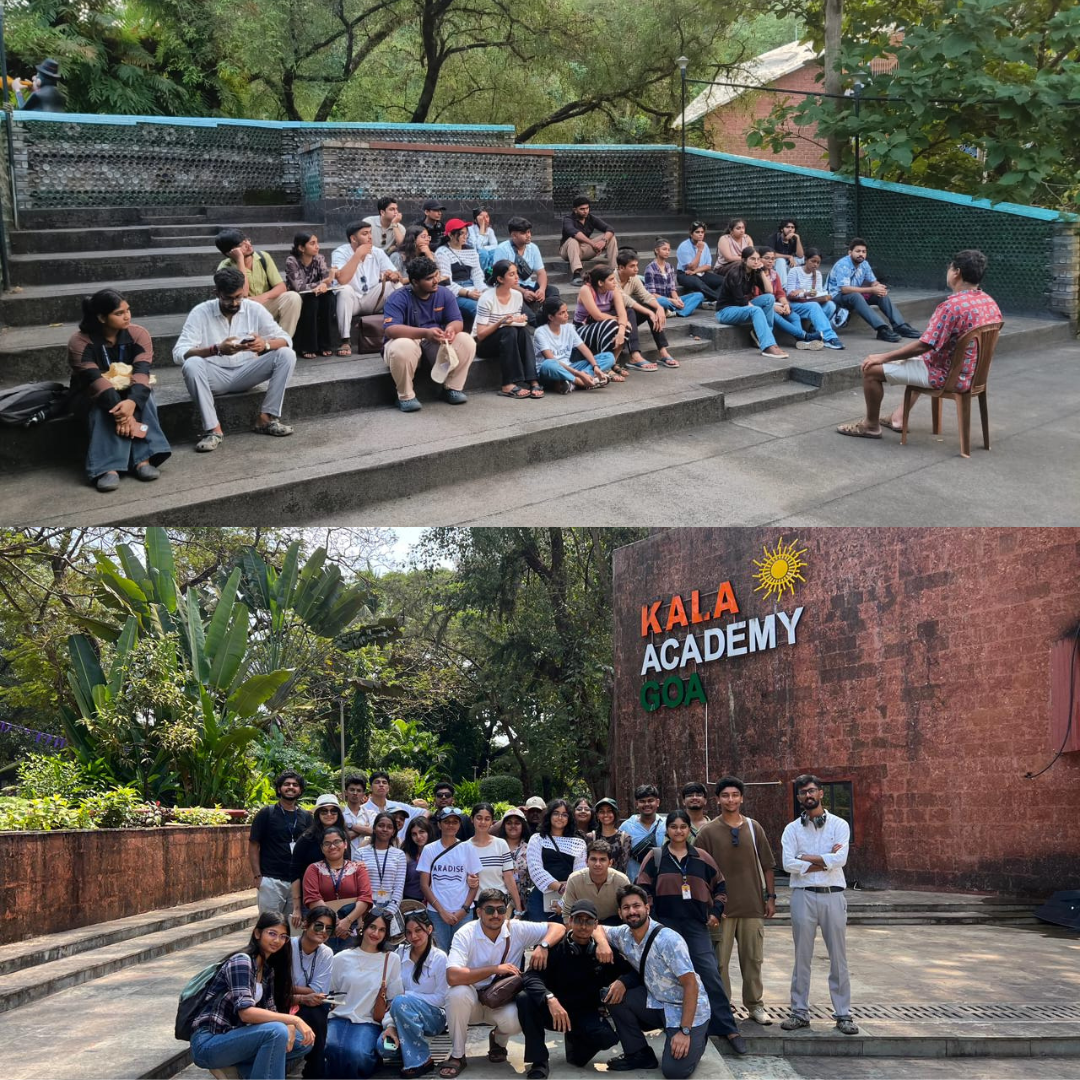
Study Trip to Bengaluru | 12th - 15th September 2025
As part of the Urban Studio course, a group of 23 Semester 7 students from Nitte Institute of Architecture (NIA) undertook a study trip to Bengaluru from 12th to 15th September 2025, accompanied by faculty member Ar. Nikita Makhasana and Ar. Sushan Hegde.
During the visit, students participated in the Srishti Manipal Open House Exhibition, where they showcased their collaborative work on the Jeppu Tile Factory of Mangaluru. This project emerged from a cross-disciplinary workshop conducted jointly with Srishti students in Mangaluru, exploring themes of creative cartography. The exhibition at the Srishti campus in Bengaluru provided a platform for dialogue and exchange between students of both institutions.
The itinerary also included visits to the Museum of Art and Photography (MAP), the Bangalore International Centre (BIC), Sabha BLR, Cinnamon House, The Opera House Samsung Store and the Cubbon Park Library for the students to be exposed to Adaptive Reuse and Culture centre case studies. The trip offered an enriching experience for students to engage with Bengaluru’s vibrant architectural and cultural landscape, reinforcing classroom learning through real-world exposure and interdisciplinary collaboration.
.png)
Suspension Bridges site– Sullia and Puttur - 21st February 2025
As part of their academic curriculum, the Semester 8 students undertook a site visit to Sullia. The visit began with an enriching session at the workshop of Mr. Patajali Bharadwaj, where students were introduced to various tools and machinery used in the construction of bridges. This hands-on experience provided a strong foundation in understanding the technical aspects of bridge construction.
Following the workshop, the students visited an ongoing suspension bridge construction site, where they witnessed live construction activities and techniques being employed in the field.
A highlight of the visit was the interaction with Padma Shri Girish Bharadwaj, popularly known as the “Bridge Man of India.” He personally guided the students through one of the suspension bridges he had constructed, explaining its design, materials, and structural detailing, offering valuable insights into his pioneering work in rural connectivity.
The visit concluded at Master Planners in Puttur, where students explored a variety of concrete and ferrocement-based furniture designs. This segment offered a glimpse into innovative applications of construction materials in functional and aesthetic forms.
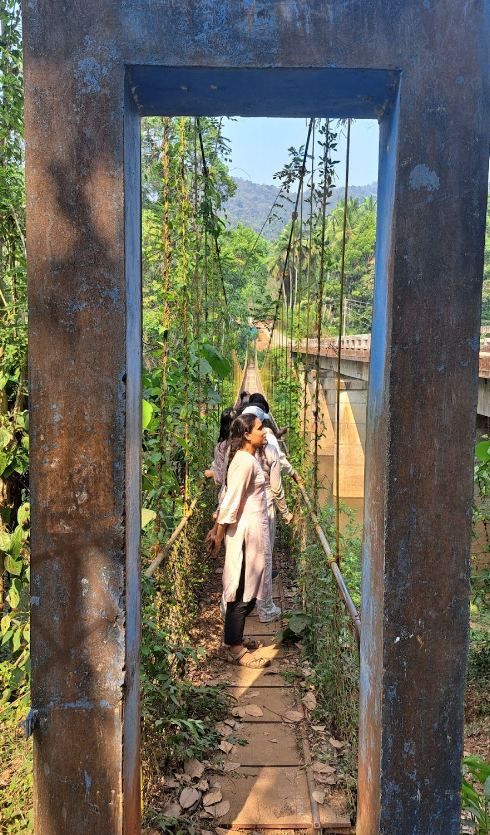
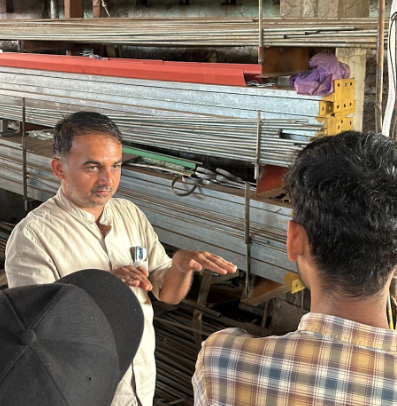
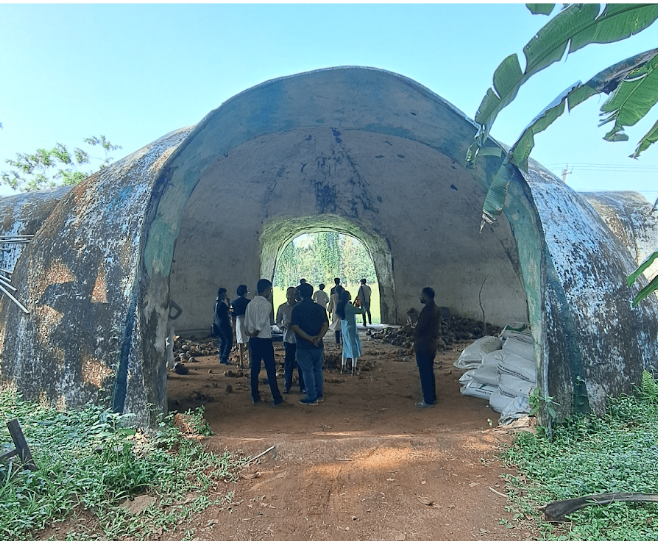
Bangalore - Urban housing and Landscape study - 12th to 15th February 2025
Semester 8 architecture students, accompanied by two faculty, embarked on a study trip to Bangalore, exploring urban housing and landscape design through real-world case studies. students engaged with experts like Bijoy Ramachandran and Sanjay Mohe, visited IIM Bangalore, Good Earth, Total Environment, Brigade Gateway, and explored Titan Integrity Campus, gaining insights into sustainable strategies, urban planning, and spatial innovation. This immersive experience enriched their academic journey, preparing them for upcoming studio
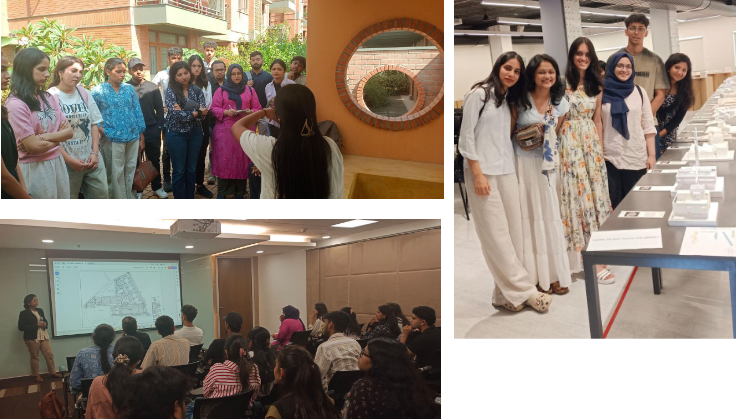
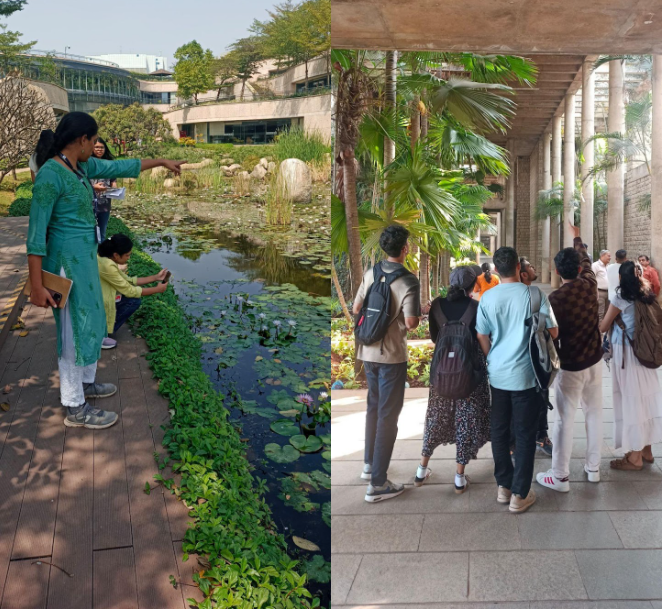
Pondicherry & Auroville - 13th October to 20th October, 2024
Semester 3 students embarked on an inspiring journey of discovery in Auroville and Pondicherry, immersing themselves in architecture, culture, and design. Highlights included exploring the craftsmanship of Sri Aurobindo Handmade Paper, delving into history on the INTECH Heritage Walk, and visiting the architectural marvel Golconde. Each stop offered valuable lessons that extended beyond the classroom.
At Tasmai, the students engaged with art and culture, reconnecting with artist Kirti Chandak after their enriching Summer School 2024 experience. Reflecting on thought-provoking perspectives and captivating works, the visit sparked meaningful discussions about art's transformative power.
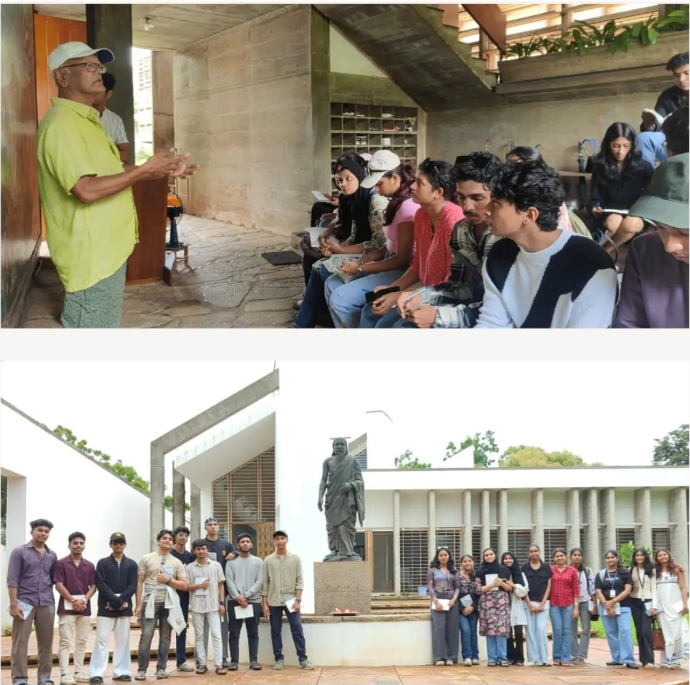
Delhi & Jaipur -24th September, 2024 to 1st October, 2024
The 5th-semester architectural studio embarked on a study tour, beginning in Jaipur, where students explored prominent sites like Jawahar Kala Kendra, Pattrika Gate, Hawa Mahal, Jal Mahal, and Amer Fort. They had the opportunity to meet architect Dhruv Gupta, visit his residential project, and explore his Fort Restaurant. The group enjoyed local cuisine at Masala Chowk and observed traditional textile dyeing techniques. The tour continued in Delhi, where visits to the National Crafts Museum, Lotus Temple, Qutub Minar, Humayun's Tomb, and the vibrant markets of Sarojini Nagar and Dilli Haat offered deep insights into both traditional and contemporary architecture. The study tour provided students with a rich learning experience, blending cultural exploration with architectural knowledge.
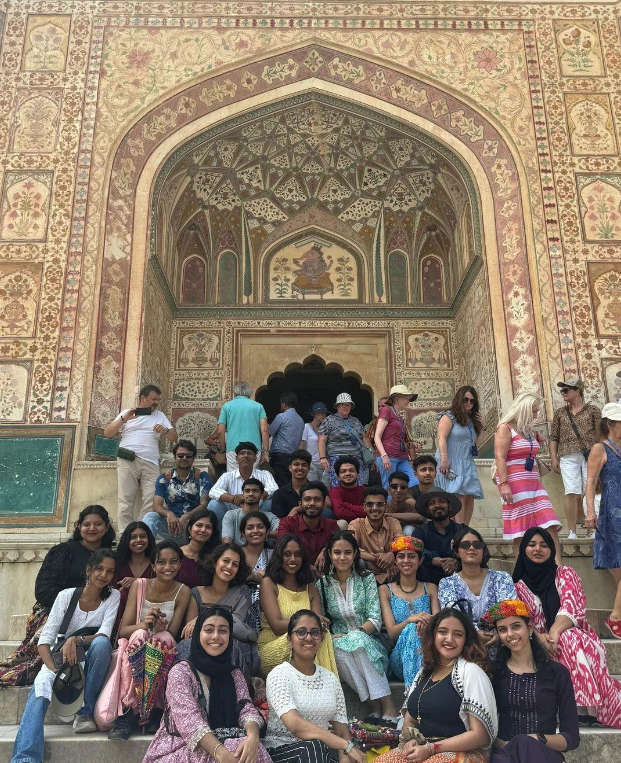
Panjim, Goa -6th to 12th February 2023
Urban Housing studio tour was conducted for the 8 th Semester, B.Arch. students from 6 th to 12 th February 2023. The tour comprised visits to traditional housing settlements in Panjim, housing projects of the Goa Housing Board, and case studies of housing projects by renowned architects such as Charles Correa, Dean D’Cruz, and Gerard Da Cunha.


